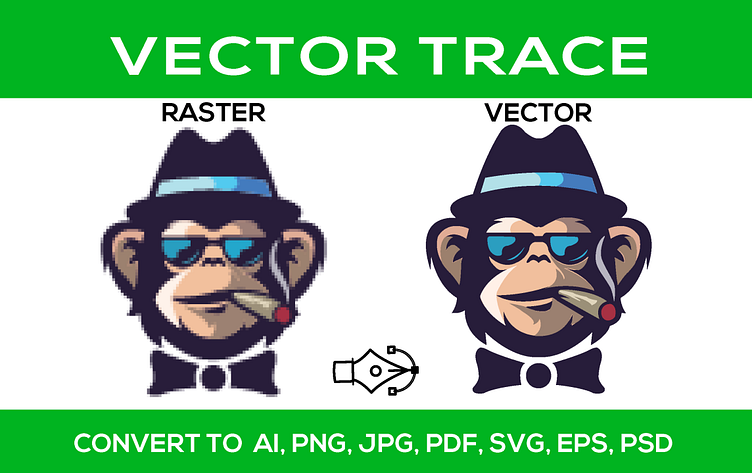Vector Tracing, Raster to Vector
Contact us:.....................................................................
Email: dmsshahin@gmail.com
WhatsApp: +8801724674681
Skype: https://join.skype.com/invite/tuJiJq14u5Hv
Telegram: https://t.me/SmSayful
WeChat : +96558859728
Manual Raster to Vector Conversion:
Advantages:
Artistic Precision: Manual conversion allows for fine-tuning and artistic control, which is particularly useful when converting complex or intricate designs.
Customization: Designers can manually adjust each vector path to create unique variations and emphasize certain details, leading to a more personalized output.
Context Awareness: Humans can better understand the context of the image, making decisions that reflect the intended message of the design.
Quality Control: Manual conversion reduces the risk of errors and produces a higher-quality vector output, as experienced designers can identify and correct inconsistencies.
Disadvantages:
Time-Consuming: Manual conversion is labor-intensive and time-consuming, especially for images with many details. This can lead to longer project timelines.
Skill Dependency: Effective manual conversion requires skilled designers who are proficient in vector graphic software, which could limit the availability of qualified personnel.
Subjectivity: Different designers might interpret the image differently, potentially leading to variations in the final vector output.
Cost: Due to the skilled labor required, manual conversion can be more expensive compared to automated methods, especially for large-scale projects.
Automated Raster to Vector Conversion:
Advantages:
Speed: Automated conversion can quickly process large volumes of images, significantly reducing the time required for conversion.
Consistency: Automated processes produce consistent results, ensuring that the same image is converted similarly every time.
Cost-Effective: Automated methods are generally more cost-effective for large-scale conversions as they require less human intervention and less skilled labor.
Batch Processing: Automated tools can process multiple images simultaneously, streamlining workflows for businesses dealing with bulk conversions.
Disadvantages:
Loss of Artistic Control: Automated conversion lacks the creative nuance and precision that manual designers can provide, resulting in potentially less artistic or customized outputs.
Quality Issues: Automated processes might struggle with intricate details, textures, and shading, leading to inaccuracies or loss of image quality.
Complex Images: Images with a high level of complexity or irregular shapes may be challenging for automated tools to accurately convert.
Error Propagation: If the automated tool misinterprets an element, the error can propagate across the entire vector output, leading to an inaccurate final design.
In practice, the choice between manual and automated raster to vector conversion depends on factors like the complexity of the image, available resources, budget, and the desired level of customization. For precision and artistic designs, manual conversion might be preferred, while automated methods are suitable for large-scale conversions that prioritize speed and cost-efficiency.
